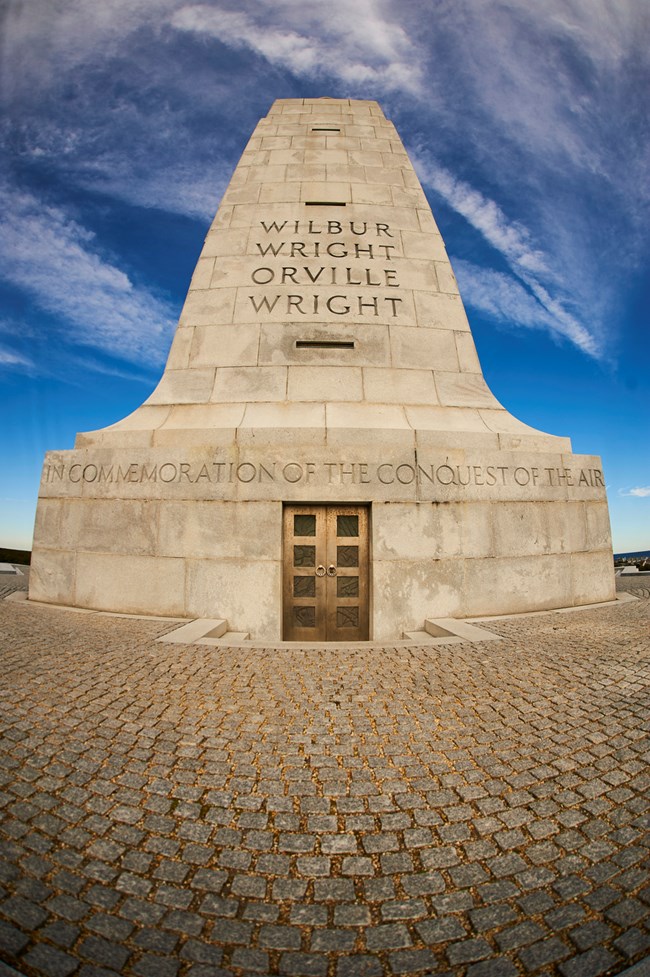Last updated: November 30, 2021
Article
Wright Brothers Monument

NPS/Kurt Moses
The design of the monument features an Art Deco style which highlights bold geometric shapes. A notable part of the monument is the inscription that reads, “In commemoration of the conquest of the air by the brothers Wilbur and Orville Wright. Conceived by genius. Achieved by dauntless resolution and unconquerable faith.” The monument also features curved, wing-like designs on either side and a lit beacon at the top which functions similarly to a lighthouse. Prior to construction of the memorial’s Mission 66 era visitor center and museum, the inside of the monument acted as a contact station. Visitors could even ascend the very narrow stairs to the top and peer out 150 feet above sea level towards where the Wright brothers flew four flights on December 17th, 1903.
Construction of the monument itself was started in 1928 with Orville Wright in attendance at the laying of the cornerstone. A local organization called the Kill Devil Hills Memorial Association (now the First Flight Society) led the efforts to protect and preserve the site, eventually gaining national support. The monument was proposed by Representative Lindsay Warren of North Carolina and Senator Hiram Bingham of Connecticut, who set out to convince President Coolidge and Congress of the importance of building the monument. Ultimately the funds were secured, and the “Kill Devil Hills Monument National Memorial” was established and managed by the War Department. To ensure that the monument wouldn’t be susceptible to sand erosion, Big Kill Devil Hill was sodded, and shrubs and other grasses were planted to stabilize it. Construction of the first bridges to the Outer Banks also started during this time in an effort to extend better access to the islands and to the memorial itself. In 1933 control of the monument was given to the National Park Service, and in 1953 it was officially renamed “Wright Brothers National Memorial.” The Memorial was dedicated on November 19th, 1932 with Orville again in attendance as well as prominent aviators and politicians of the time.Today the monument continues to sit atop big Kill Devil Hills and reigns over it as one of the highest points in the Outer Banks while continuing to honor the legacy of two brothers
